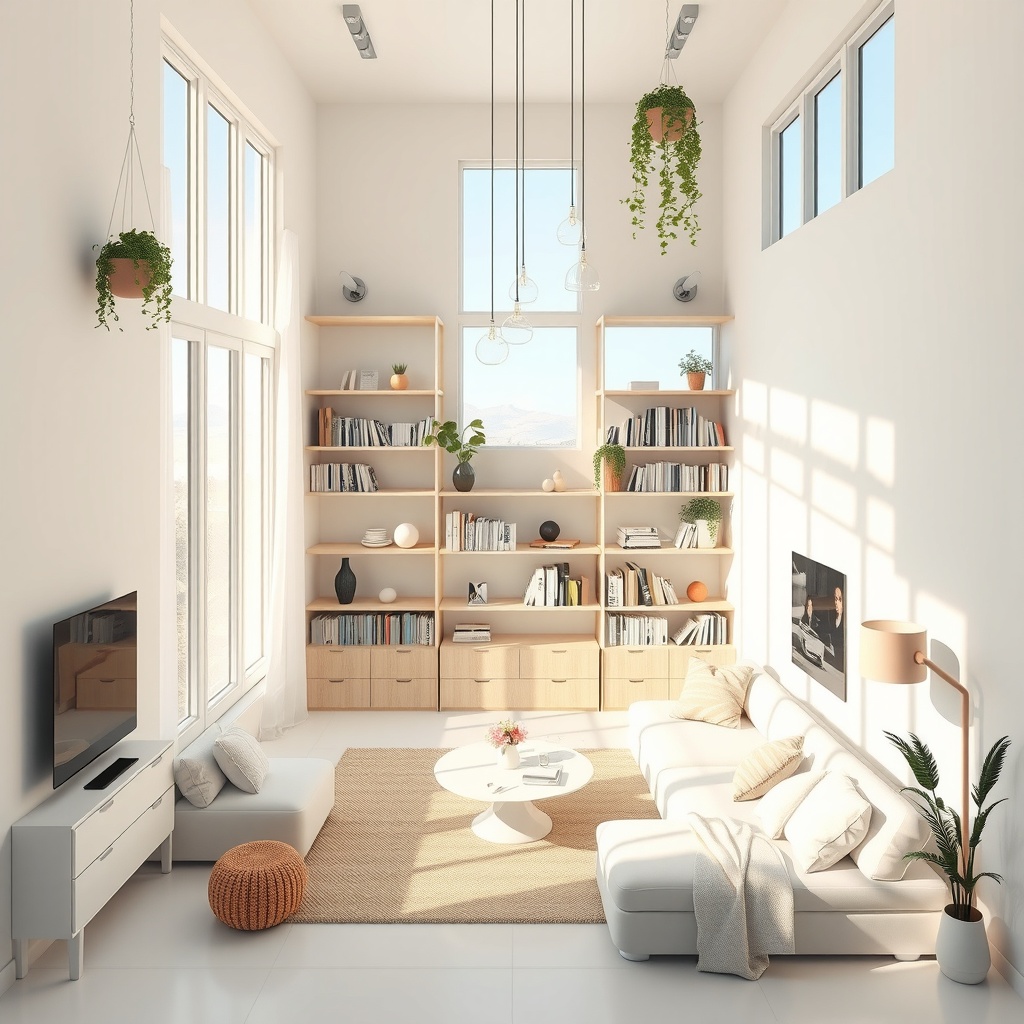
How to Make a Tiny Living Space Feel Huge
Introduction
Living in a tiny space presents unique challenges and opportunities. While the limited square footage might seem constraining at first, with some creative approaches, you can make your small living environment feel spacious and inviting. The essence of maximizing a small space lies in smart design choices that create an illusion of openness, enhance functionality, and elevate comfort.
In this article, we will delve into a series of expert tips and strategies to transform your compact living quarters into a space that feels not only bigger but also more efficient. From clever storage solutions to thoughtful décor adjustments, we'll explore various methods for amplifying space in a small home.
Section 1: Choosing the Right Furniture
One of the most impactful ways to make a small space feel larger is by selecting appropriately sized furniture. Oversized pieces can quickly make a room feel cluttered and tight. Instead, opt for furniture that fits comfortably within the space, allowing for clear pathways and reducing visual bulk.
Consider multi-functional furniture items such as Murphy beds, which offer an excellent solution for small bedrooms by doubling up as a storage space or work area when folded away. Additionally, choose light-colored furniture that blends seamlessly with the room's overall palette to create a sense of unity and openness.
Maintain a balance in furniture selection by mixing and matching different items that complement each other without overwhelming the room. For instance, a low-to-the-ground coffee table can pair perfectly with smaller, light-colored chairs to enhance the airy feel of the living area.
Section 2: Maximizing Vertical Space
In small spaces, thinking vertically can dramatically enhance the room's perceived size. Utilize shelving units that extend towards the ceiling to draw the eye upward, thereby creating a sense of height and spaciousness. This not only helps in storing essentials but also keeps the floor clear, adding to the openness.
Hang long curtains just above the window frame to give the illusion of higher ceilings. The extended drop of the fabric elongates the walls, making the space feel more expansive. Choose light and airy materials that allow natural light to filter through, further opening up the room.
Incorporate vertical patterns or stripes in wallpapers or décor elements. Such designs can trick the eye into perceiving more height, ensuring that even the tiniest space can feel much larger and more inviting.
Section 3: Smart Use of Color and Light
Color and light play pivotal roles in transforming a small space. Painting walls and ceilings in light, neutral shades can make the area feel brighter and larger. White or pastel tones reflect more light, effectively maximizing the natural illumination available.
Strategic placement of mirrors can create the illusion of additional space. Position mirrors opposite windows to bounce light around the room, or behind furniture to add depth without encroaching on floor space.
Avoid cluttering the room with heavy drapes or dark furniture, as these can absorb light and create a closed-in feel. Instead, opt for sleek, transparent furniture like glass or acrylic items that maintain visual flow and contribute to an open atmosphere.
Section 4: Innovative Storage Solutions
Effective storage solutions are key to maintaining an uncluttered space in small homes. Hidden storage options, such as under-bed drawers or built-in shelves, maximize floor space and eliminate the chaos of visible clutter.
Think creatively about storage functionalities; for instance, use floating shelves or hooks to keep frequently used items off the floor. This not only creates more space but also ensures that essentials are within easy reach.
Invest in stylish storage furniture that doubles up as a functional piece, like ottomans or benches with inside compartments. Such multi-purpose items help keep the space tidy while seamlessly integrating into the décor.
Conclusion
Transforming a tiny space into a larger-feeling, welcoming home is an achievable goal with the right strategies. By focusing on appropriate furniture sizing, utilizing vertical space effectively, employing smart color and lighting techniques, and maximizing storage options, you can create a living environment that feels comfortable, open, and enjoyable.
Each of these elements works in harmony to defy the physical limitations of a small space, proving that thoughtful design can magnify any space into a warm and inviting sanctuary. Implement these tips, and you might find that your modest living quarters offer more than enough room to live life to the fullest.
Ultimately, the key to making a tiny space feel huge lies in creativity, intentionality, and a willingness to adapt layout and design to better suit your lifestyle.